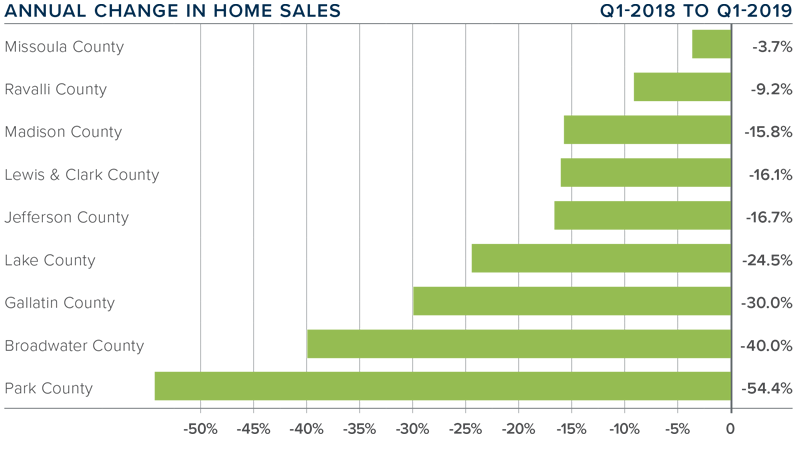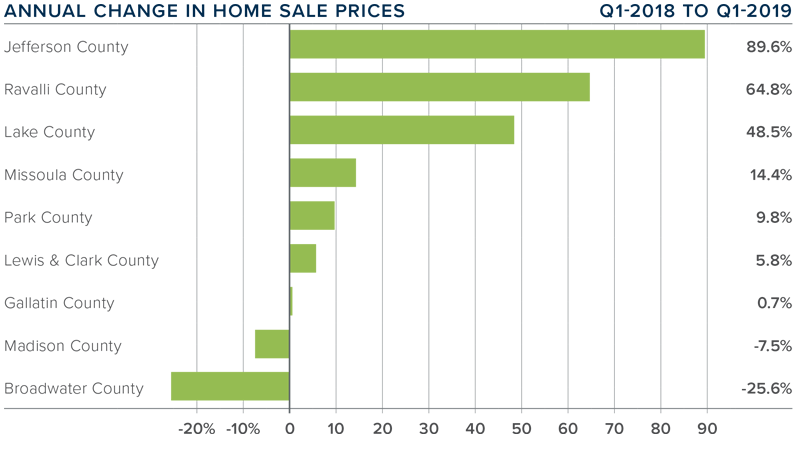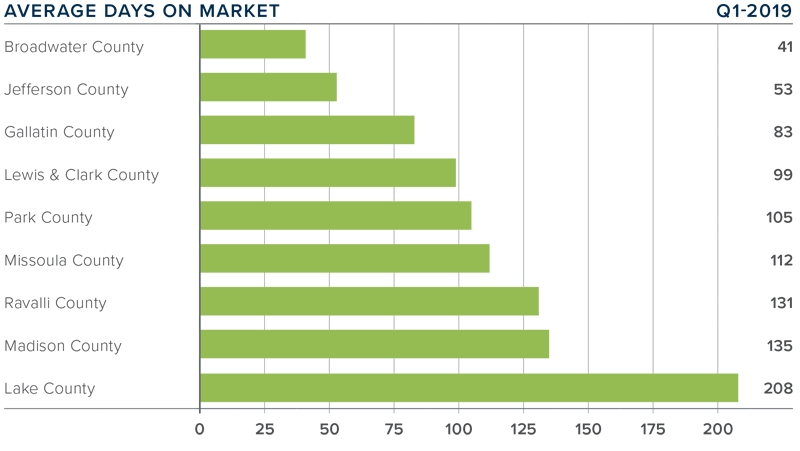The following analysis of select Montana real estate markets is provided by Windermere Real Estate Chief Economist Matthew Gardner. We hope that this information may assist you with making better-informed real estate decisions. For further information about the housing market in your area, please don’t hesitate to contact your Windermere agent.
ECONOMIC OVERVIEW
Over the past 12 months, Montana has added 4,800 new non-agricultural jobs. This represents an annual growth rate of a modest 0.9%, which is lower than the national growth rate of 1.7%. In the first quarter of the year, the state lost 1,300 non-agricultural jobs, which was a disappointment, but I remain hopeful we will see some improvement as we move through the balance of the year. My 2019 forecast still suggests the state will see non-farm employment rise 1.2%, or an additional 5,800 new jobs. In March, the state unemployment rate was a healthy 3.7%, matching the level seen a year ago.
HOME SALES
- In the first quarter of 2019, 825 homes sold, a drop of 25% over the same period in 2018.
- Sales activity fell across the board, with the largest annual drop in small Park County, where sales were down 54.4%.
- The number of homes for sale is still well below the levels I would like to see, with an average of 1,092 listings in the first quarter within the counties contained in this report.
- Clearly, inventory levels continue to hold sales back. I am still hopeful that the late spring market will bring an increase in listings, but the growth is likely to be modest.

HOME PRICES 
- The average home price in the region continued to rise in first quarter, with a year-over-year increase of 1.5% to $406,540.
- Jefferson and three other counties experienced double-digit price increases compared to a year ago. Average sale prices dropped in two counties. Small Broadwater County saw the biggest price drop, but this is a function of the size of the market and the relatively few transactions that occur there.
- Price appreciation was strongest in Jefferson County, where home prices rose by almost 90%. This is a very small area, though, and wild swings in prices are not that uncommon.
- The takeaway from this data is that prices continue to rise modestly but housing affordability is likely acting as a headwind to more robust price growth.

DAYS ON MARKET
- The average number of days it took to sell a home rose eight days compared to the first quarter of 2018.
- Homes sold fastest in Broadwater County and slowest in Lake County. Five counties — Missoula, Lewis & Clark, Broadwater, Jefferson, and Madison — saw days on market drop compared to the first quarter of 2018.
- During the first quarter of 2019, it took an average of 107 days to sell a home in the region.
- The takeaway here is that market time is rising, which is likely due to limited choice as well as lower affordability levels.

CONCLUSIONS
 This speedometer reflects the state of the region’s real estate market using housing inventory, price gains, home sales, interest rates, and larger economic factors.
This speedometer reflects the state of the region’s real estate market using housing inventory, price gains, home sales, interest rates, and larger economic factors.
For the first quarter of 2019, I have moved the needle a little further toward buyers. Mortgage rates dropped significantly in the first quarter and this, to a degree, helps home buyers offset affordability issues. Additionally, current list prices are likely holding back many prospective buyers, so I wouldn’t be surprised to see prices moderate in the coming months. As always, pricing homes accurately will be key to attracting buyers.
 As Chief Economist for Windermere Real Estate, Matthew Gardner is responsible for analyzing and interpreting economic data and its impact on the real estate market on both a local and national level. Matthew has over 30 years of professional experience both in the U.S. and U.K.
As Chief Economist for Windermere Real Estate, Matthew Gardner is responsible for analyzing and interpreting economic data and its impact on the real estate market on both a local and national level. Matthew has over 30 years of professional experience both in the U.S. and U.K.
In addition to his day-to-day responsibilities, Matthew sits on the Washington State Governors Council of Economic Advisors; chairs the Board of Trustees at the Washington Center for Real Estate Research at the University of Washington; and is an Advisory Board Member at the Runstad Center for Real Estate Studies at the University of Washington where he also lectures in real estate economics.
 Facebook
Facebook
 X
X
 Pinterest
Pinterest
 Copy Link
Copy Link



